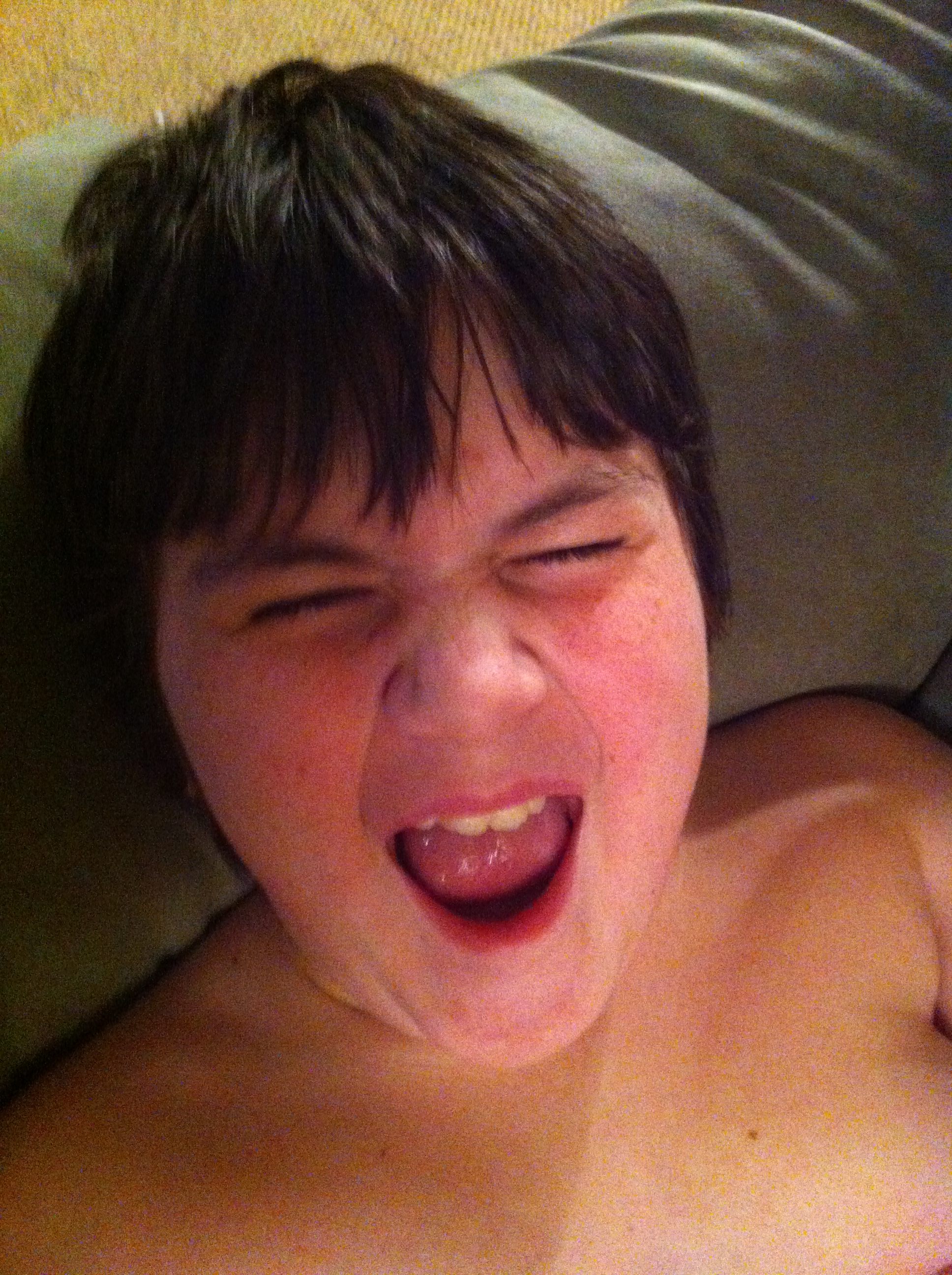 The other morning, before I even had a chance to hit snooze at 4:35, I woke up to this:
The other morning, before I even had a chance to hit snooze at 4:35, I woke up to this:
Click to hear (speakers DOWN!)
It proceeded for four and a half hours, until I left for work.
Trying to get out of bed, my son was standing over me making these very loud, bizarre noises.
Getting the three malamutes leashed up and ready for their morning walk, my son was trying to ride them and screamed the noises in their faces.
While I was preparing his breakfast, he would sneak up behind me and scream the noises so I jumped and spilled his food.
During my entire workout he would jump on my back, grab my leg, stand on my back while I was doing pushups, and fight with the dogs… all while making non-stop noises.
Whilst in the shower he would constantly open the curtain and scream (it echoes! Oh boy… even louder!) the noises.
Applying my makeup.
Getting dressed.
Making coffee.
Packing lunches.
Preparing the dogs’ treats.
Yes, four and a half hours. Of course, I was in rushing deadline mode, not patient parent mode, so I made the situation worse.
As I was leaving for the office, he immediately sat down and began composing beautiful original music on his DSi XL. Huh? Then he had the temerity to say to me, “Mom, it seems like you have your feathers in a bunch today.”
AAAAAHHHHHHHHHHHH!
So what was going on?
I wish I knew. I wish I had a distinct checklist or pattern that would solve for “x” (the noises).
It could have been something he ate or drank before I got up (clearly he was awake before my 4:30 alarm) that caused a reaction.
Maybe this was an extension of sensory-seeking behavior.
Maybe it was verbal stimming due to something was worrying him – a change in a pattern or schedule (he recently had some issues with visitation and his father).
Maybe he was bored.
Maybe he wanted attention.
Maybe he was just having an off day – we all have them. Children with Autism (and puberty!) may not intuitively know how to channel “bad day” energy.
What I do know is this: had I stopped for five minutes and employed one of the tools I normally pull out of my “patient parent toolbox”, I’m sure the morning would have gone differently. I’m not saying the behavior would have stopped completely, but here are some ways I could have redirected him:
- Invited him to join me on any of the physical activities of the morning, like the dog walk or intervals (jumping jacks, jump rope, running in place, squats)
- Taken a yoga break
- Engaged him in a one-on-one activity that he loves (Hangman, Picto-chat, Uno)
- Played a sensory game
- Had a protein snack
- Did an EFT tapping session
- Designated a “screaming” area of the house where it’s okay to let it all out
These are all quick, simple ways to break the pattern of the morning. I, on the other hand, became stressed, got aggravated, and let the panic of being late overtake me. I got to work feeling like I wanted to carve out my intestines and strangle someone with them. Imagine how he felt, having all this energy in his body and not knowing how to get it out without getting in trouble!
Lesson learned. Sometimes we have to experience 17 levels downward before we can “level up”.
What about you? Have you seen a behavior recently that made you pull your hair out? What did you do about it? What could you have done differently? I’d love to hear your stories in the comments below or on the SOA Facebook page!








